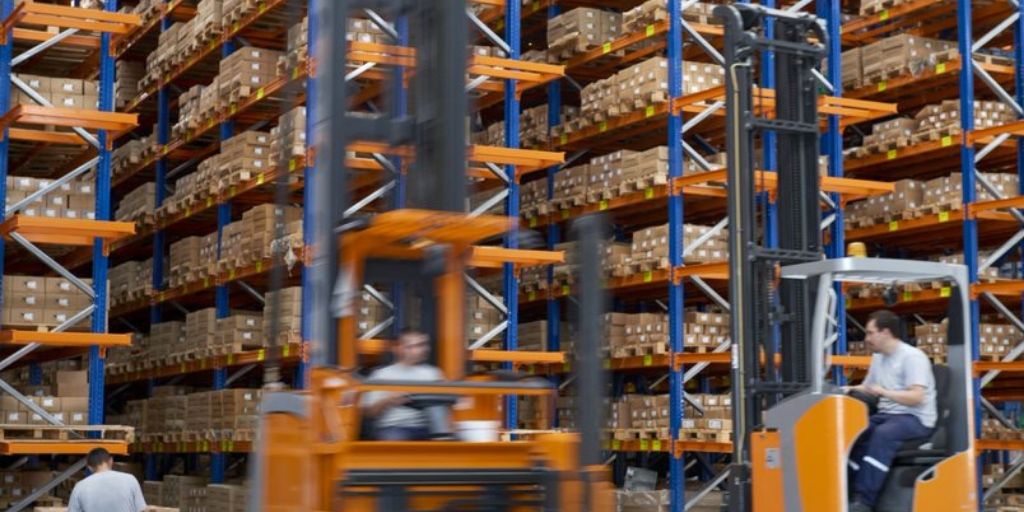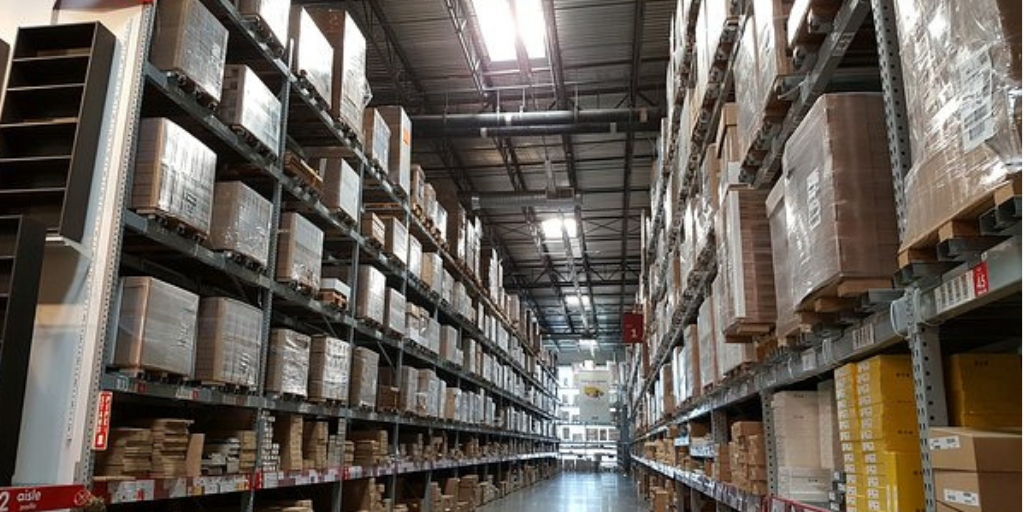
by Fronetics | Oct 10, 2019 | Blog, Content Marketing, Logistics, Marketing, Robotics & Automation, Supply Chain
Supply chain companies are beginning to use robotics to boost warehouse efficiency and drive profits thanks to new automated technologies.
Highlights:
- High-res cameras, pressure sensors, navigation lasers, and acoustic warning indicators allow automated devices to navigate warehouses efficiently and autonomously.
- Robotics offers enhanced efficiency for both warehouse capability and predictive supply chain management.
- After major investments in automated fulfillment centers, Amazon has seen a 50% increase in capacity when compared to facilities that don’t use robotics.
A recent Information Services Group (ISG) study suggests that something big is happening: 72% of information services (IS) enterprises plan to increase their investment in robotics by the end of the 2019. Why? Because automation and IS are a natural fit.
Leading companies worldwide are beginning to use robotics to boost their warehouse efficiency and forecasting capabilities. And an improving price-to-performance ratio associated with robotics technology means that usage is sure to continue expanding.
The advantages of automation
New automated technologies are a game-changer. Until recently, available robotic devices were stationary and couldn’t interact visually with their surroundings or respond to unexpected inputs. Today, robots are mobile and collaborative. High-res cameras, pressure sensors, navigation lasers, and acoustic warning indicators allow automated devices to navigate warehouses efficiently and autonomously.
Recent technology upgrades include software that causes a robot to cease activity temporarily if it encounters an unexpected object or input, meaning that these devices can safely work alongside humans. Whereas earlier robots were used mainly to transfer objects from one place to another, more recent technology can enhance tasks ranging from managing inventory to retrieving, assembling, and packing orders.
Industry leaders have invested in automated warehouse management systems (WMS) with undeniable results. After major investments in automated fulfillment centers, Amazon has seen a 50% increase in capacity when compared to facilities that don’t use robotics. Amazon has even acquired the company that creates its robots, indicating Amazon’s confidence that the continued production and development of automated technology will play a big part in their future.
JD.com, China’s largest online retailer, has gone even further. Boasting the world’s first fully automated e-commerce warehouse, JD has equipped the 43,000-square-foot facility with 20 industrial robots that allow the company to provide same- and next-day delivery to more than 1 billion customers. Whereas a standard warehouse of that size would require nearly 500 workers, JD employs just 5.
Streamlining operational staff offers a big pay-off. On average, a warehouse employee wastes almost 7 weeks per year in unnecessary motion, which adds up overall to $4.3 billion in labor expenses. For employees, simply walking around in the warehouse accounts for 50% of the time involved in retrieving orders and checking inventories. Coupled with the potential for human error, the superior efficiency of robots makes it a question of “when?” rather than “if?” automation will become the new norm in parcel-sorting hubs and distribution centers.
Automated guided vehicles
The robotics revolution is already underway. One of the most widespread and effective uses of robots in warehouses is the automated guided vehicle (AGV). These self-driving vehicles are rendering expensive and single-use equipment like conveyor belts and large loading vehicles obsolete. Battery-monitoring systems send AGVs back to their charging ports when necessary, maximizing the efficiency of their operation. AGVs can be directed by voice or programmed to retrieve orders, guided by physical markers, magnets, and vision systems. In addition to navigating a warehouse floor more quickly and efficiently than human employees, AGVs are also capable of lifting and transporting much heavier weights, allowing for a larger number of orders to be retrieved in the same amount of time.
The advantages of AGVs run deeper than warehouse efficiency, however, and extend to logistics operations as well. AGVs track and update inventory records in real time as they retrieve orders. Ordinarily, the immense amount of data involved in running supply chains creates inefficiency and requires additional personnel to monitor inventory levels and place orders. The AGV integrates these tasks into a streamlined operation, as it can retrieve items as soon as order data is received and updates inventory levels instantaneously, even placing automatic purchases. This allows for improved forecasting and faster inventory refill.
Effi-BOT & Sawyer
That’s all very well in theory. But how does it work in practice?
DHL has led the pack in using robots to assist employees with repetitive and physically demanding tasks. Effi-BOT, an AGV that follows employees through DHL warehouses, takes over the physical work involved in picking orders. The use of Effi-BOT has allowed DHL to move from single-order picking to a multi-order model, and helps track complex inventory dynamics.
Another robot, Sawyer, has illustrated how automation can be used in flexible ways to accommodate ever-changing purchasing and order patterns involved in e-commerce. Sawyer’s collaborative capabilities allow it to handle repetitive aspects of the co-packing process. By adding Sawyer to its existing workforce, DHL has been able to use the robot to flexibly adjust to unpredictable order data.
Managing robotics
Typically, the inventory and performance data generated by devices such as Sawyer and Effi-BOT is aggregated in a dashboard that supply chain managers can use to check inventory levels and review automated requests sent from robotic devices to purchasing departments. By integrating data recorded in real time by automated devices, dashboards make larger and larger segments of the supply chain visible, allowing managers to pinpoint the source of problems, such as a delayed order from a supplier’s factory.
Robotics thus offers enhanced efficiency for both warehouse capability and predictive supply chain management. While the regulatory policies surrounding the use of robotics in the workplace are as yet uncertain, there can be no doubt that automation is already re-shaping the supply chain. Successful companies of the future will be the ones that find ways of taking advantage of new robotics technology today.
This post originally appeared on EBN Online.
Related posts:


by Jennifer Hart Yim | Feb 28, 2019 | Blog, Strategy, Supply Chain, Warehousing & Materials Handling
If you want to keep your customers satisfied, you need to keep things moving in your facility. Use these tips to keep up the pace and increase warehouse and distribution center efficiency.
Highlights:
- Speed has become the name of the game when it comes to staying competitive in the global supply chain.
- Keep your priorities in mind when organizing your warehouse, including your fastest-moving products.
- Digital technology can take the guesswork out of inventory and warehouse management with employees scanning products every step of the way.
This guest post was written by David Maddenfor Argentus Supply Chain Recruiting, a boutique recruitment firm specializing in Supply Chain Management and Procurement.
Things can always be faster when you work in a warehouse or distribution center. Speed has become the name of the game when it comes to staying competitive in the global supply chain. Major players like Amazon and Walmart have distribution centers all over the world, pumping out packages at lightning speed.
If you want to keep your customers satisfied, you need to keep things moving in your warehouse or distribution center. Use these tips to keep up the pace and make your facility as efficient as possible.
1. Keep your warehouse organized
Nothing stymies operational efficiency like a poorly-organized warehouse. Your facility should have a thoroughly thought-out floor plan that your employees can navigate with ease. The space should be organized so that your staff members can access products and packages without getting in each other’s way. Your employees may need to process different orders simultaneously, so they should have plenty of space to avoid stepping on each other’s toes. Today’s warehouses are much larger than they were in the past, creating more space for speed and efficiency.
Items should be clearly labeled on the shelf and organized in a way that makes sense for your facility. You can group packages by their contents, destination or point of origin. This layout should make sense to your employees, so they’ll be able find the items they need without having to look at a spreadsheet.
2. Prioritize fast-moving products
Keep your priorities in mind when organizing your warehouse. Every element of your chosen layout should favor your fastest-moving products. Bestsellers don’t tend to sit on the shelf for very long, so make sure your employees can easily retrieve them at all times. Your employees shouldn’t have to go all the way to the back just to retrieve a product, especially if it’s one of your most popular items. You can help everyone save time by moving these fast-selling products to the front of your warehouse. They should be kept low to the ground and close to the loading dock.
Your entire warehouse layout should focus on moving better-performing products to the front, while keeping the less popular products at the back. Go over your inventory and rate your products based on how often your employees need to retrieve them. This should inform your thinking as you change the layout of your facility.
3. Automate the data collection process
Running a warehouse these days is all about data. Digital technology can take the guesswork out of inventory and warehouse management with employees scanning products every step of the way. Your facility should collect as much data on your products as possible, including where they’re coming from, when they arrive, what condition they are in, where they’re going and when they’re set to leave. You can use this data to keep tabs on the location of your products. At any given moment, you’ll know exactly how many products are being stored at your facility.
But in order to improve efficiency, you need to automate the data collection process as much as possible. Your staff members should automatically retrieve this data as they go about unloading and scanning items that have just arrived at the facility and getting them ready for the last leg of their journey. You can use handheld scanners and radio frequency identification tags to simplify this process. Automating data collection also reduces costly errors like inaccurate data entry.
Warehouse automation technology is already a $1.9 billion industry, and it’s expected to balloon to $22 billion by the year 2021. If you want to stay competitive, it might be time to invest in automation. You’ll have all the information you need at your fingertips without adding any additional steps to your operations.
4. Use inventory management software
As you collect all this data on the shipping containers and products moving in and out of your facility, you can save time by sending that info right to your company’s inventory management software. This technology helps you make sense of all the data in a matter of seconds. You can quickly see how many products are on the shelf, when shipments need to go out and when new shipments are due to arrive. Software programs are synced to your data collection devices, so you won’t have to worry about entering that information twice.
[bctt tweet=”Artificially intelligent software programs can even help you anticipate future outcomes like inventory shortages, delivery delays and other potential problems. ” username=”Fronetics”]
Certain artificially intelligent software programs can even help you anticipate future outcomes like inventory shortages, delivery delays and other potential problems. They keep a log of the history of your facility’s operations to help better predict what’s going to happen in the future.
5. Save time with cross docking
If you have fast-moving products coming through the door, you can save time with what’s known as cross docking. Instead of putting these products back on the shelf only to have your employees retrieve them hours later, direct them to a temporary staging area for scanning and inventory purposes. This temporary staging area should be close to the loading dock. When the products are ready for the next leg of their trip, your employees can quickly retrieve them and get them out the door without having to look for them on the shelf.
6. Increase visibility with better lighting
The key to operational efficiency isn’t always as complicated as it seems. Sometimes all you need is better lighting. Warehouses tend to have tall ceilings, and lighting the space, including all those individual shelves, can be a challenge. If you want to be speed up your warehouse operations, everyone should be able to see clearly as they go about their business. Staff members should be able to read labels and use containers without having to squint. Keeping the lights on also helps your employees stay awake, especially if they’re getting a shipment ready in the middle of the night.
Working towards warehouse efficiency
Making your warehouse more efficient starts with having the right layout in place. Your products should be organized according to their popularity. You should automatically collect data on your products as soon as they enter the facility. And always make sure your employees have enough space and light to do their jobs. Follow these steps and you’ll get orders out the door in record time.
Related posts:





